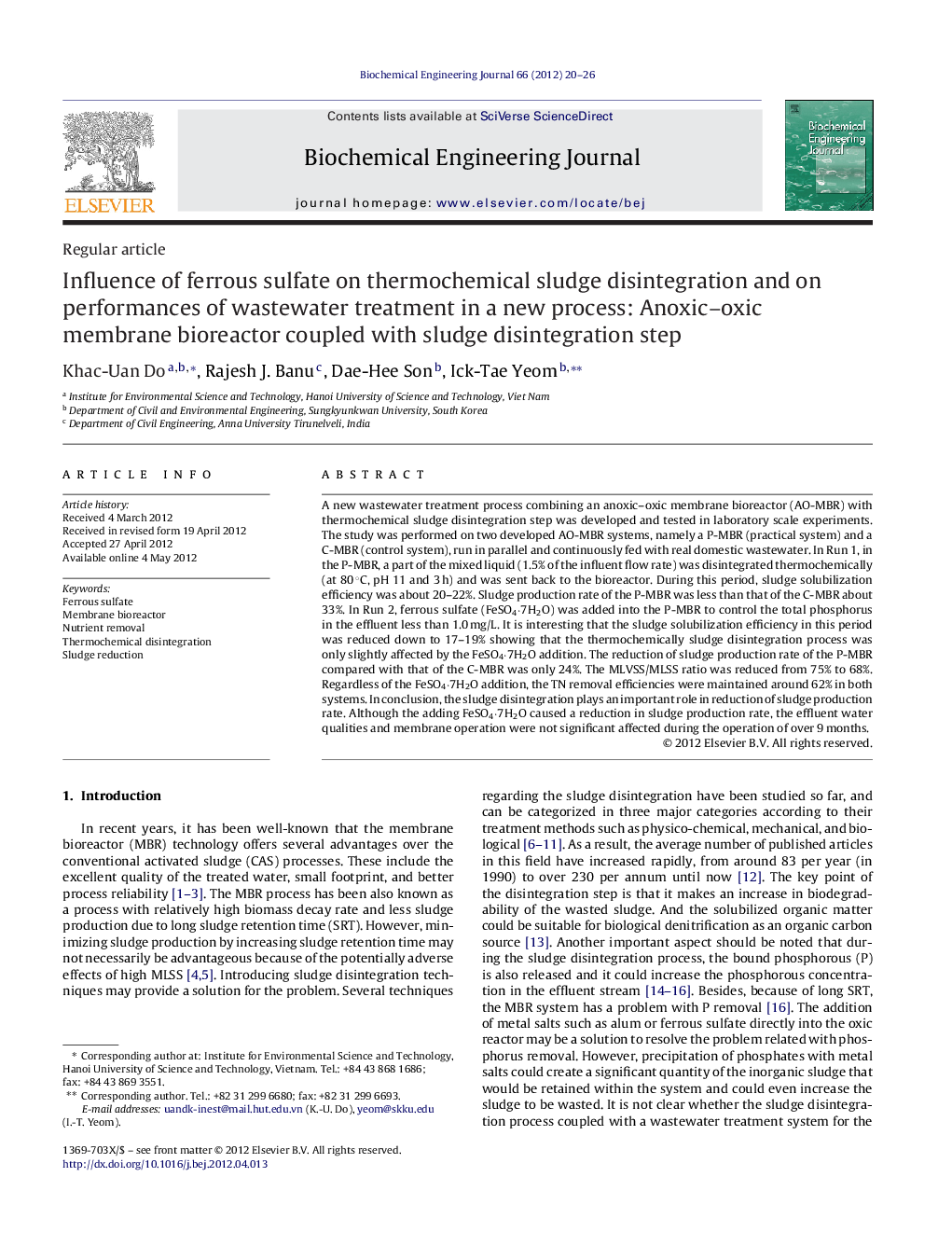| کد مقاله | کد نشریه | سال انتشار | مقاله انگلیسی | نسخه تمام متن |
|---|---|---|---|---|
| 3627 | 179 | 2012 | 7 صفحه PDF | دانلود رایگان |

A new wastewater treatment process combining an anoxic–oxic membrane bioreactor (AO-MBR) with thermochemical sludge disintegration step was developed and tested in laboratory scale experiments. The study was performed on two developed AO-MBR systems, namely a P-MBR (practical system) and a C-MBR (control system), run in parallel and continuously fed with real domestic wastewater. In Run 1, in the P-MBR, a part of the mixed liquid (1.5% of the influent flow rate) was disintegrated thermochemically (at 80 °C, pH 11 and 3 h) and was sent back to the bioreactor. During this period, sludge solubilization efficiency was about 20–22%. Sludge production rate of the P-MBR was less than that of the C-MBR about 33%. In Run 2, ferrous sulfate (FeSO4·7H2O) was added into the P-MBR to control the total phosphorus in the effluent less than 1.0 mg/L. It is interesting that the sludge solubilization efficiency in this period was reduced down to 17–19% showing that the thermochemically sludge disintegration process was only slightly affected by the FeSO4·7H2O addition. The reduction of sludge production rate of the P-MBR compared with that of the C-MBR was only 24%. The MLVSS/MLSS ratio was reduced from 75% to 68%. Regardless of the FeSO4·7H2O addition, the TN removal efficiencies were maintained around 62% in both systems. In conclusion, the sludge disintegration plays an important role in reduction of sludge production rate. Although the adding FeSO4·7H2O caused a reduction in sludge production rate, the effluent water qualities and membrane operation were not significant affected during the operation of over 9 months.
► A new wastewater treatment process combining an AO-MBR with thermochemical sludge disintegration is developed and tested.
► The influence of FeSO4 on the sludge disintegration process is first examined.
► The observations showing that the thermochemical sludge disintegration is fully compatible with conducted AO-MBR system.
► The thermochemically sludge disintegration process is only slightly affected by FeSO4 addition.
► The effluent water qualities and membrane operation are not significant affected during over 9 months of operation.
Journal: Biochemical Engineering Journal - Volume 66, 15 July 2012, Pages 20–26